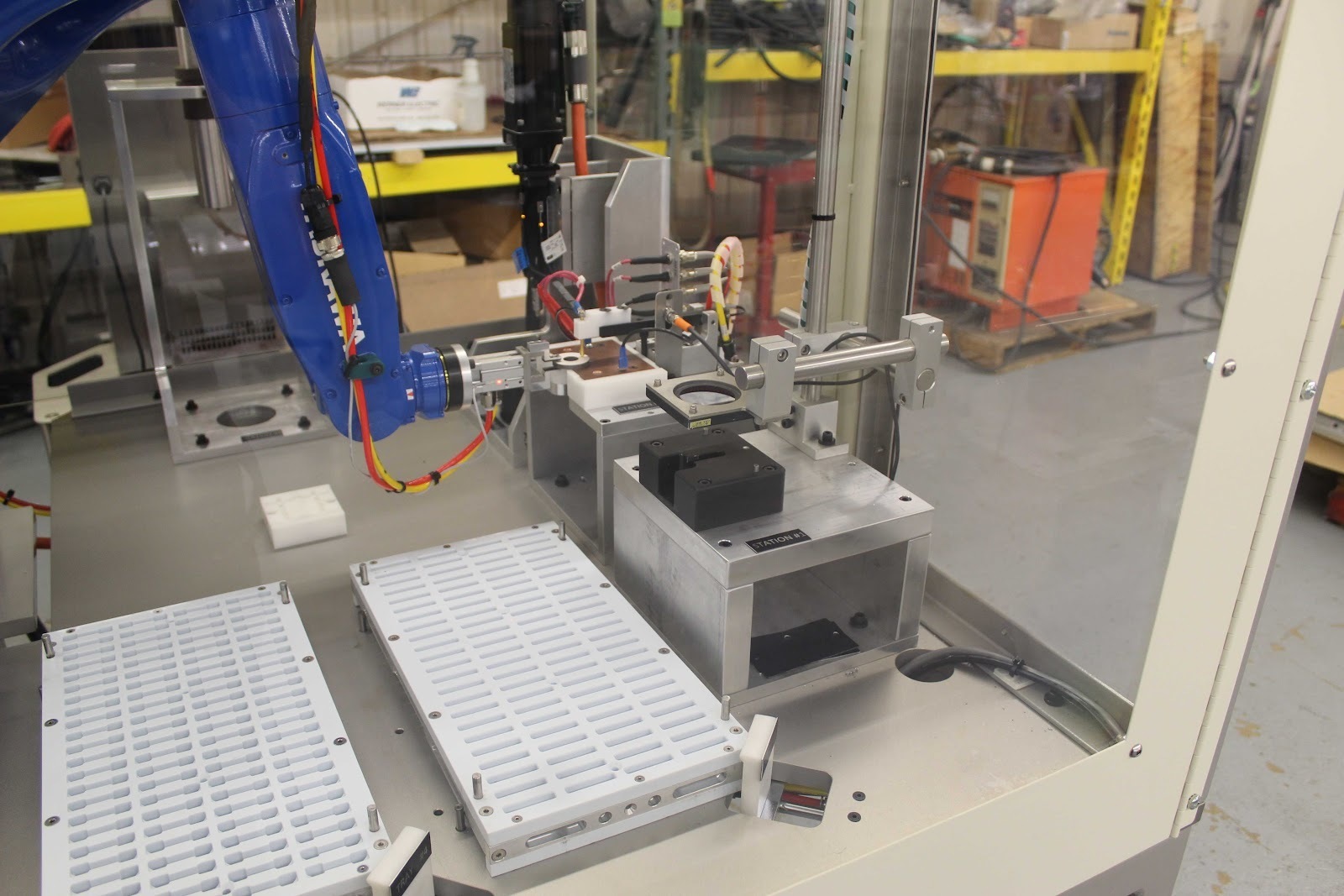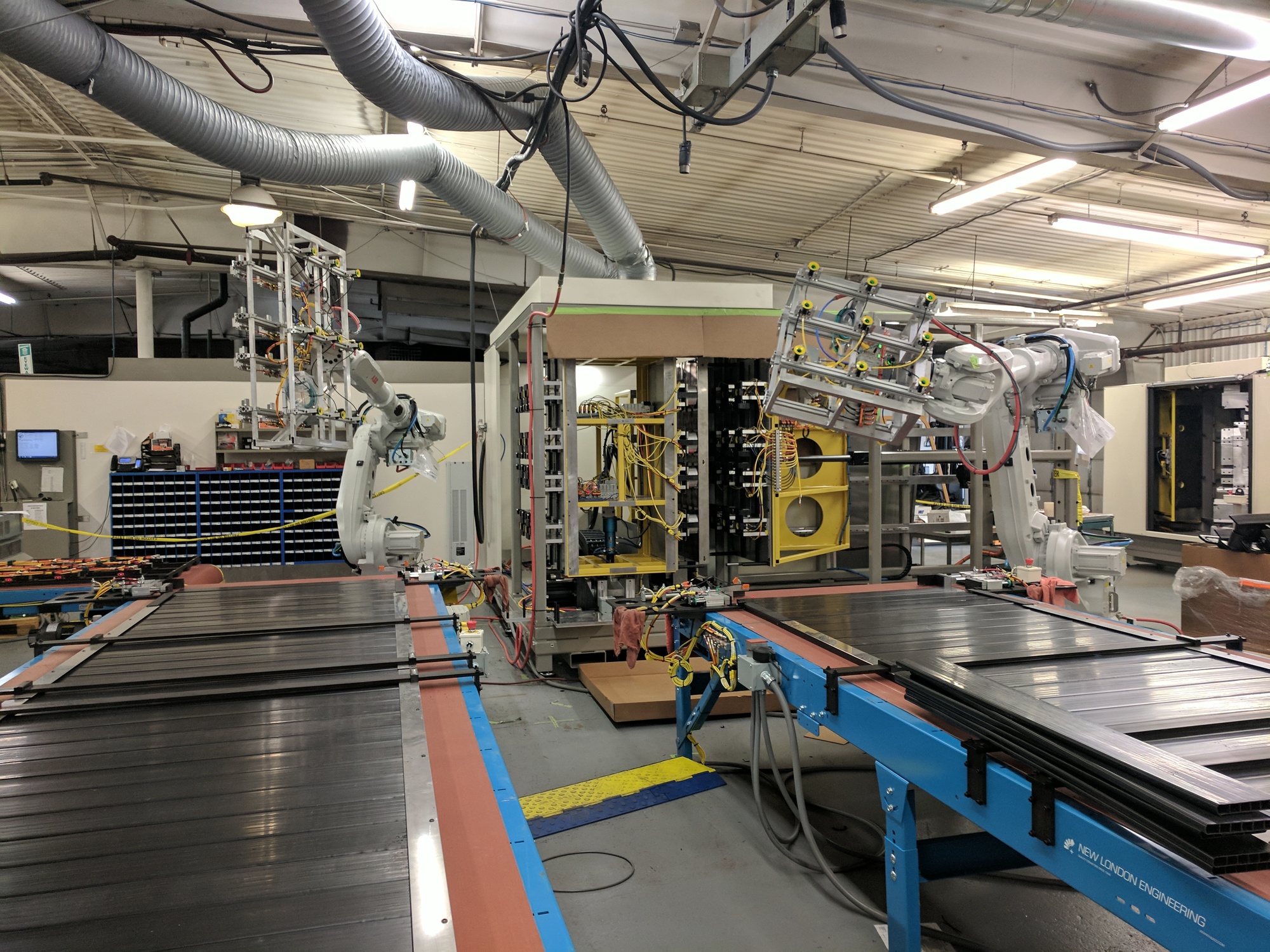Robotics
In the realm of manufacturing, the synergy between robotics and plastic welding systems has ushered in a new era of efficiency, precision, and versatility. Robotic systems integrated with plastic welding and testing processes offer a multitude of benefits, ranging from enhanced productivity to improved product quality.
Understanding Robotic Integration
What is Robotic Integration?:
- Robotic integration can be as simple as utilizing a robot to load and unload a plastic welding or testing systems to as complex as an operator-free, fully automated system utilizing a robot to perform all part handling requirements.
- Robots can also be integrated as a sub-process of a larger automation system. This allows for complex part handling moves that can’t be handled by a traditional pick and place device.
Types of Robotic Systems:
- Most commonly used robotic arms with plastic welding and testing systems are 6-axis articulating robots
- Cobots are used when product mass is low and required force is low. These smaller robots allow for simple recipe adjustment and part changes by our customers.
- Cartesian robots may also be used for certain applications; typically these are for planar working areas partnered with a drawer loading system.
- Forward Technology designs and builds all of our end-of-arm tools (EOATs) for each project; this allows us to fully control mass, part(s) locating and gripping, and other critical design features that provide a robust solution for our customers.
Applications of Robotic Integration in Plastic Welding
- Automotive Industry: Robotics are commonly used in plastic welding systems built for the automotive industry. Instrument panels, bumpers, and headliners are a short list of common parts that are handled via robotics; large, bulky components that are not easily handled by an operator. These parts can be loaded and welded with Forward Technology’s hot plate, infrared, vibration, or ultrasonic systems.
- Medical Device Manufacturing: Robotics in the medical industry are used most often when system throughput needs to be increased in comparison to an operator controlled assembly pace. Medical filters, syringes, and fluid handling systems utilize robotics to increase product quality and system production rate.
- Consumer Goods Production: Robotics are utilized to enhance Hot Plate, Infrared, and Vibration welding systems that are used to assemble balance rings, washing machine tubs, pallets, and totes. These large parts are difficult to manually move; a robot allows customers to simplify and improve the quality and production rate of the plastic welding processes.
Advantages of Robotic Integration
- Enhanced Precision: Robotic part handling offers unparalleled precision in plastic welding, leading to consistent weld quality and minimized defects.
- Increased Productivity: By eliminating the influence of an operator in the part handling process, robotic integration allows for efficiency gains including higher throughput rates and reduced cycle times.
- Flexibility and Adaptability: Robotic systems can easily adapt to different welding or testing tasks and accommodate changes in production requirements with minimal downtime. Forward’s engineering team prides itself on the ability to design EOATs to be used on multiple part types, eliminating the need to change the EOAT when switching between products.
Future Trends and Innovations
- Reduced or Less Skilled Labor Force: with non-skilled, and skilled, labor being difficult to find, robotic systems allow companies to reallocate their existing labor force to other critical processes without compromising on the products that the robotic system is producing
- AI and Machine Learning Integration: with the advancement of AI and Machine Learning, Forward Technology’s controls engineering group is integrating AI capable components and techniques into the robotic (and other) systems to allow for improved system performance and minimal downtime by predicting wear items and optimizing plastic welding and testing processes


